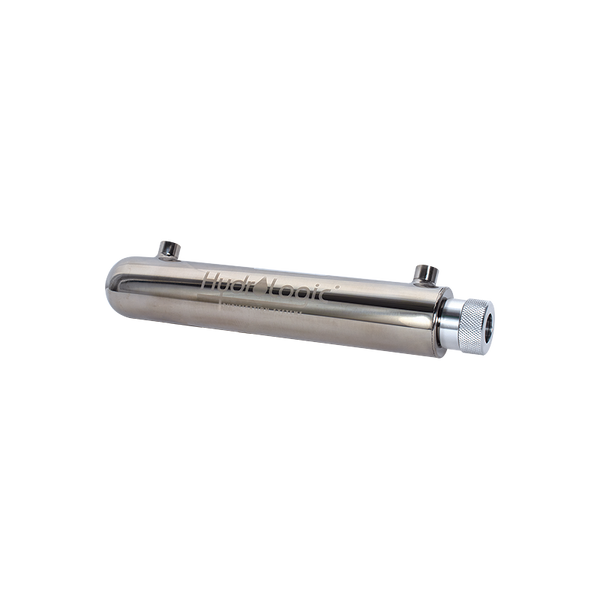Let me see if I understand matters. I'm a chemist so I like to be clear.
1. You intend chlorinating water using pool 'Shock'. Basically this is adding bleach.
2, You do not intend using a high strength solution (you'd need PPE) to clean it prior to use, but to attempt to maintain a system full of plant roots, sterile?
OK. Assuming I've got the facts right... this is a daft idea.
1. Tap water has about the highest concentration of chlorine or chloramine that the roots can stand. Using a stronger solution will stunt, then kill your plants.
2. Tap water is not resistant to the growth of algae and bio-film-forming organisms of all sorts.
3. Sterility can only be achieved in an autoclave or a recondensing solvent bath. I don't think your plants would like those.
4. Even 100% alcohol leaves viable spores behind. 70% alcohol + H2O2 will sterilise but I don't think your plants would like that.
In other words, what you think is sterile is anything but sterile.


